What is coronary artery disease?
Coronary artery disease (CAD), also known as coronary heart disease or ischemic heart disease, is the most common type of heart disease.
CAD occurs when plaque, a sticky substance made of fat, cholesterol, cell waste and other materials, builds up in the coronary arteries. These arteries supply your heart with vital blood, oxygen and nutrients. This plaque buildup, also called atherosclerosis, can cause arteries to narrow or harden, restricting blood flow. It can also break off and form clots that block the arteries, leading to a heart attack or stroke.
Coronary artery disease can weaken your heart muscle over time, contributing to many serious heart conditions, including heart failure. It is the number one cause of death in the United States in both men and women. Still, in many cases, you can prevent CAD or slow its progression by making healthy lifestyle changes.
Types of coronary artery disease
CAD often develops over many years without causing noticeable symptoms. For many years, the first sign of coronary artery disease is a heart attack. In other people, CAD causes shortness of breath, chest pain that worsens with exercise or emotional stress, or other signs, but it doesn’t necessarily cause a heart attack. People are increasingly diagnosed with coronary artery disease through non-invasive imaging tests, which allow your doctor to identify the condition in an earlier stage, often before symptoms appear.
Doctors may classify CAD by how you experience it and give it one of the following names:
- Acute coronary syndrome: Plaque breaks off and suddenly blocks blood flow. You may have a heart attack or sudden, severe chest pain that does not go away with rest.
- Stable ischemic heart disease: You have symptoms that typically last two months or more. Symptoms may appear with activity and go away when you rest.
- Pre-clinical ischemic heart disease: You may have no coronary artery disease symptoms, but an early form of the condition is present.
Coronary artery disease symptoms
CAD often does not cause symptoms until you have significant plaque buildup. Doctors often call it a “silent” disease. You may not know you have it until you have a severe heart event, such as a heart attack.
When coronary artery disease causes symptoms, chest pain (angina) is the most common. Stable ischemic heart disease causes stable angina, which means your chest pain (which may also feel like discomfort) comes and goes in regular patterns and usually gets better when you rest or take medications.
Acute coronary syndrome causes unstable angina, which is sudden intense chest pain or discomfort that happens whether you’re active or resting. There’s no predictable pattern to the pain, and it may last more than 15 minutes. Unstable angina is a symptom of a heart attack and needs emergency care.
Other CAD symptoms include shortness of breath or pain in the neck or jaw.
When to see a doctor
See a doctor if you experience any type of chest pain, shortness of breath or neck pain or think you could be at risk for coronary artery disease. You should also see your doctor for annual checkups. These visits allow your doctor to check your blood pressure, cholesterol levels and other markers of heart health that could suggest you have or are at risk for coronary artery disease.
You should call 911 immediately if you have or see someone having symptoms of a heart attack. Do not drive yourself to the hospital. Heart attack symptoms include:
- Chest pain, discomfort, squeezing, burning, pressure* or tightness*
- Cold sweats
- Dizziness*
- Feeling lightheaded or weak
- Feeling like you have indigestion*
- Heart palpitations
- Severe fatigue*
- Nausea or vomiting*
- Pain in your jaw, neck, shoulders,* back* or arms*
- Stomach pain*
- Shortness of breath
*These symptoms are more likely to occur in women.
Coronary artery disease risk factors
The atherosclerosis (plaque buildup) that causes CAD can be related to many factors, some of which you can control and some you cannot.
You cannot control your age, biological sex, genes or family history, which can increase your risk, but you can control your lifestyle. Your diet and exercise habits can contribute to the development of plaque and CAD. The main preventable risk factors are diabetes, unhealthy cholesterol levels, high blood pressure and smoking.
Risk factors for coronary artery disease include:
- Age: Men age 45 and up and women over age 55 are at higher risk.
- Alcohol: Regularly drinking too much can raise your blood pressure and cholesterol levels.
- Diabetes: High blood sugar levels damage your arteries.
- Diet: Eating a diet high in saturated fat, salt and refined carbohydrates can lead to high cholesterol and blood pressure.
- Excess weight: Being overweight or obese raises your risk of heart problems.
- Family history: You are more at risk if a close family member has cardiovascular disease, especially if it developed at an early age.
- Genes: Some genes have been linked to a higher risk of CAD.
- High blood pressure: Blood pressure is the force of blood against your artery walls. High blood pressure can damage them.
- High cholesterol levels: Having high LDL (or bad) cholesterol contributes to plaque buildup.
- Lack of sleep: Not getting enough good quality sleep may raise your risk of heart problems.
- Lack of physical activity: A sedentary lifestyle can worsen other risk factors, such as high blood pressure and high cholesterol.
- Menopause: Women are more at risk for CAD after menopause when their levels of the hormone estrogen drop.
- Other medical conditions: Many conditions, including autoimmune conditions, chronic kidney disease and HIV/AIDS, are linked to an increased risk of CAD.
- Pregnancy complications: Conditions such as gestational diabetes and pre-eclampsia (high blood pressure during pregnancy) can increase risk.
- Race or ethnicity: People who are Black, Native American or South Asian are at higher risk than white people.
- Sex: More men are affected than women, but CAD is a leading cause of death in both sexes. Women more commonly experience shortness of breath as a symptom compared to chest pain, which is more common among men.
- Smoking: Smoking and exposure to secondhand smoke can damage your blood vessels.
Complications
If your heart muscle does not get enough oxygen-rich blood or a blood clot completely blocks an artery, you can develop serious complications. A heart attack can happen without warning, even if you have had no symptoms before.
Complications of coronary artery disease include:
- Arrhythmia: The muscle cells that regulate your heart rate may become damaged, leading to a fast, slow or irregular heartbeat.
- Heart attack: A heart attack occurs when your heart does not get enough oxygen. Lack of oxygen causes tissue to die.
- Heart failure: Restricted blood flow can weaken your heart. Heart failure develops when your heart becomes too weak to work efficiently.
- Stroke: A blood clot can block the blood supply to your brain, causing a stroke. Some types of irregular heartbeat can also raise your risk of stroke.
How is coronary artery disease diagnosed?
Your doctor will diagnose coronary artery disease based on a physical examination, your medical history, symptoms, imaging tests and heart scans.
Since the condition does not always cause symptoms, your doctor might diagnose risk factors, such as high blood pressure or unhealthy cholesterol levels, before diagnosing CAD. Your doctor can diagnose these risk factors at routine checkups and help you find ways to lower your risk of developing CAD.
-
Medical history and exam
Your doctor will review your medical history and family health history. They will also ask about any symptoms you might have.
During the physical exam, your doctor will listen to your heart and check your blood pressure. They might weigh you and calculate your body mass index (BMI), a number calculated based on your height and weight that tells them whether you may be considered overweight or obese.
-
Imaging and tests
Your doctor might order cardiac imaging to get a better idea of your heart health, look at your blood vessels and assess your risk of developing CAD.
Tests used to diagnose coronary artery disease include:
- Blood tests: Your provider will take a blood sample to check your cholesterol, triglycerides and blood sugar. They may also test for C-reactive protein, a sign of inflammation.
- Calcium score test: This type of CT scan measures calcium buildup in the walls of your arteries. Higher calcium levels suggest plaque buildup.
- Cardiac positron emission tomography (PET) scan: A radioactive substance, called a tracer, is injected into your vein and travels to your heart. A PET scanner helps your doctor identify poor blood flow to your heart.
- Echocardiogram: This uses sound waves to show how well your heart beats. Your doctor might use this with an exercise stress test.
- Electrocardiogram (ECG): Your doctor uses a machine to measure the strength and timing of the electrical signals passing through your heart, as well as its rhythm.
- Heart stress test: This test looks at your heart while it is working hard, for example as you walk on a treadmill or ride a stationary bike. Your doctor will use an ECG to measure its electrical activity as you move.
- Magnetic Resonance Imaging (MRI) scan: Powerful magnets and radio waves create a 3D scan of your heart and coronary arteries. Cardiac MRI scans can show tissue damage, blood flow problems or disease in your small coronary arteries.
- Angiogram: You might need this procedure if other tests suggest you have coronary artery disease. A doctor inserts a catheter through a blood vessel and uses contrast dye and X-rays to see plaque and, if necessary, perform angioplasty to clear your artery.
- Coronary CT angiography: A less invasive type of angiogram, this test uses 3D imaging to show plaque and blood flow through your coronary arteries.
Coronary artery disease treatment
Your doctor will work with you to develop a treatment plan, depending on how serious your symptoms are and any other health conditions you have. They will normally recommend lifestyle changes and might prescribe medication to treat your symptoms and risk factors.
You should get your cholesterol levels and blood pressure checked regularly.
Lifestyle changes
Lifestyle changes can help you lower your cardiovascular disease risk factors; manage risk factors you may have, such as diabetes, high blood pressure and unhealthy cholesterol; and prevent CAD from getting worse. Your doctor will likely recommend:
- Changes to diet: A heart-healthy diet high in fruits, vegetables and whole grains and low in salt, sugar, saturated fat and refined carbohydrates can lower blood pressure, help you maintain healthy cholesterol levels and help you reach a healthy weight.
- Exercise: Like diet, physical activity can help you with blood pressure, cholesterol and weight concerns. Aim for 150 minutes of moderate exercise a week.
- Sleep: Sleep gives your body a chance to repair damaged blood vessels. Try to get seven to nine hours of good-quality sleep each night. If you struggle to get enough sleep, talk to your doctor about whether you may have a sleep disorder.
- Smoking cessation: If you smoke, your provider can help you find tools to quit, such as medications, gums and other aids.
- Stress management: Stress may harm your heart, and it drives you to unhealthy behaviors, such as drinking alcohol, smoking and eating unhealthy foods. Find ways to manage stress and consider speaking to a mental health professional if needed.
- Weight loss: A healthy weight protects your heart and reduces many CAD risk factors. If diet and exercise are not enough, your doctor can connect you with a weight management program.
Medication
Your doctor might prescribe medicine to lower high blood pressure, address unhealthy cholesterol, prevent blood clots and manage chest pain. Medicine can also manage risk factors, such as obesity or high blood sugar.
Medications for coronary artery disease may include:
- ACE inhibitors and angiotensin-receptor blockers: These lower blood pressure so your heart does not work so hard.
- Aspirin (low dose): This helps prevent blood clots by thinning your blood. Your doctor might prescribe this to prevent a heart attack if you are at high risk or have already had one.
- Beta blockers: This group of medicines blocks the effect of your body’s stress hormones, reducing your heart rate and relieving pressure on your heart.
- Blood thinners: These include antiplatelet drugs and anticoagulants, which stop harmful blood clots from forming.
- Calcium channel blockers: These drugs relax your blood vessels, lowering your blood pressure.
- Colchicine: This medicine helps control inflammation, which can be linked to CAD, reducing your risk of heart attack and stroke.
- Nitroglycerin: This relaxes your blood vessels and can prevent or relieve chest pain.
- Ranolazine: This drug can relieve chest pain and treat coronary microvascular disease, which is caused by damage to small blood vessels in your heart.
- Statins: Statins treat high cholesterol levels by lowering your body’s production of cholesterol and preventing its buildup in your arteries.
- PCSK9 inhibitors: These drugs block the protein PCSK9, which helps your liver remove LDL cholesterol from your blood. Your doctor might prescribe them if you cannot take statins.
Surgery
If you have advanced CAD or are at high risk of a heart attack or heart failure, you might need surgery. When possible, your surgeon will use nonsurgical or minimally invasive techniques, using small cuts to reduce recovery times.
CAD procedures include:
- Angioplasty and stenting: Your doctor inserts a catheter into one of your arteries and threads a small, deflated balloon at the site of the blockage. The balloon opens, widening the artery. A stent is usually put in place to keep the artery open.
- Coronary artery bypass grafting: Your surgeon will take a healthy piece of blood vessel from your leg, arm or chest. This is used to create a new channel for blood to flow around a blocked or narrowed coronary artery.
- Transmyocardial laser revascularization: This is a procedure where a laser makes small holes in your heart muscle to improve blood flow. It can treat severe chest pain if you are not a suitable candidate for angioplasty or bypass surgery.
Find specialized coronary artery disease care
At Baylor Scott & White, we have multiple locations across North and Central Texas to provide you with access to expert cardiology care. Our specialized cardiovascular centers are designed to meet the unique needs of people who have been diagnosed with coronary artery disease. Whether you're seeking diagnostic testing, treatment options or need ongoing support, our teams are here to help you with coronary artery disease care.

Baylor Scott & White Advanced Heart Failure Clinic - Abilene
1219 E South 11th St Ste B2, Abilene, TX, 79602

Baylor Scott & White Advanced Heart Failure Clinic - Amarillo
1901 Medi Park Dr Ste 2051, Amarillo, TX, 79106

Baylor Scott & White Advanced Heart Failure Clinic - Dallas
3410 Worth St Ste 250, Dallas, TX, 75246
- Monday: 8:00 am - 4:30 pm
- Tuesday: 8:00 am - 4:30 pm
- Wednesday: 8:00 am - 4:30 pm
- Thursday: 8:00 am - 4:30 pm
- Friday: 8:00 am - 4:30 pm

Baylor Scott & White Advanced Heart Failure Clinic - Longview
906 Judson Rd , Longview, TX, 75601
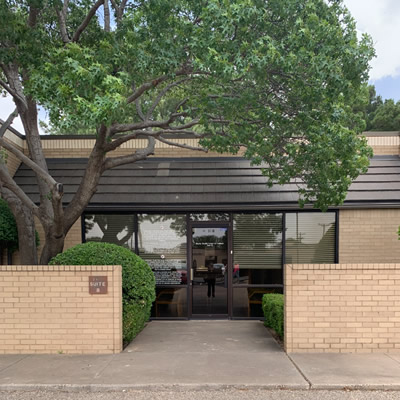
Baylor Scott & White Advanced Heart Failure Clinic - Lubbock
3711 22nd St Ste B, Lubbock, TX, 79410

Baylor Scott & White Advanced Heart Failure Clinic - Midland/Odessa
420 E 6th St Ste 102, Odessa, TX, 79761
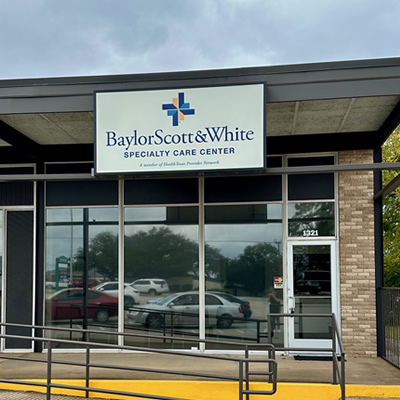
Baylor Scott & White Advanced Heart Failure Clinic - Tyler
1321 S Beckham Ave , Tyler, TX, 75701

Baylor Scott & White Advanced Heart Failure Specialists - Fort Worth
1250 8th Ave Ste 200, Fort Worth, TX, 76104
- Monday: 8:00 am - 5:00 pm
- Tuesday: 8:00 am - 5:00 pm
- Wednesday: 8:00 am - 5:00 pm
- Thursday: 8:00 am - 5:00 pm
- Friday: 8:00 am - 5:00 pm

Baylor Scott & White All Saints Medical Center - Fort Worth
1400 8th Ave , Fort Worth, TX, 76104

Baylor Scott & White Arrhythmia Management - Denton
3333 Colorado Blvd , Denton, TX, 76210
- Monday: 8:00 am - 5:00 pm
- Tuesday: 8:00 am - 5:00 pm
- Wednesday: 8:00 am - 5:00 pm
- Thursday: 8:00 am - 5:00 pm
- Friday: 8:00 am - 5:00 pm

Baylor Scott & White Arrhythmia Management - Garland
7217 Telecom Pkwy Ste 205, Garland, TX, 75044
- Monday: 8:00 am - 5:00 pm
- Tuesday: 8:00 am - 5:00 pm
- Wednesday: 8:00 am - 5:00 pm
- Thursday: 8:00 am - 5:00 pm
- Friday: 8:00 am - 5:00 pm

Baylor Scott & White Arrhythmia Management - Grapevine
2020 W State Hwy 114 Ste 320, Grapevine, TX, 76051

Baylor Scott & White Arrhythmia Management - McKinney
5236 W University Dr POB I, Ste 4900, McKinney, TX, 75071
- Monday: 8:00 am - 5:00 pm
- Tuesday: 8:00 am - 5:00 pm
- Wednesday: 8:00 am - 5:00 pm
- Thursday: 8:00 am - 5:00 pm
- Friday: 8:00 am - 5:00 pm

Baylor Scott & White Arrhythmia Management - Plano
1820 Preston Park Blvd Ste 1450, Plano, TX, 75093
- Monday: 8:00 am - 5:00 pm
- Tuesday: 8:00 am - 5:00 pm
- Wednesday: 8:00 am - 5:00 pm
- Thursday: 8:00 am - 5:00 pm
- Friday: 8:00 am - 5:00 pm

Baylor Scott & White Arrhythmia Management - Prosper
111 S Preston Rd Ste 10, Prosper, TX, 75078
- Monday: 8:00 am - 5:00 pm
- Tuesday: 8:00 am - 5:00 pm
- Wednesday: 8:00 am - 5:00 pm
- Thursday: 8:00 am - 5:00 pm
- Friday: 8:00 am - 5:00 pm

Baylor Scott & White Arrhythmia Management - Rockwall
1005 W Ralph Hall Pkwy Ste 225, Rockwall, TX, 75032

Baylor Scott & White Cardiac and Thoracic Surgery - Fort Worth
1250 8th Ave Ste 200, Fort Worth, TX, 76104
- Monday: 8:00 am - 4:30 pm
- Tuesday: 8:00 am - 4:30 pm
- Wednesday: 8:00 am - 4:30 pm
- Thursday: 8:00 am - 4:30 pm
- Friday: 8:00 am - 4:30 pm
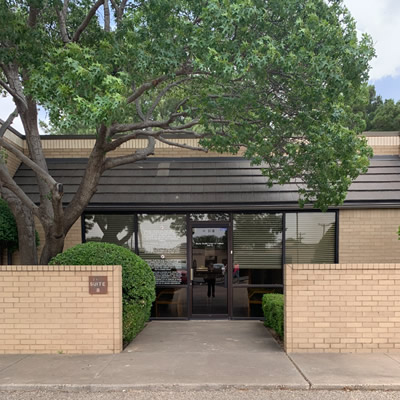
Baylor Scott & White Cardiac and Thoracic Surgery - Lubbock
3711 22nd St Ste B, Lubbock, TX, 79410

Baylor Scott & White Cardiac and Thoracic Surgery - Odessa
420 E 6th St Ste 102, Odessa, TX, 79761

Baylor Scott & White Cardiac and Thoracic Surgery - Weatherford
2035 Fort Worth Hwy Ste 100, Weatherford, TX, 76086

Baylor Scott & White Cardiac Surgery - Dallas
621 N Hall St Ste 120, Dallas, TX, 75226
- Monday: 8:30 am - 4:30 pm
- Tuesday: 8:30 am - 4:30 pm
- Wednesday: 8:30 am - 4:30 pm
- Thursday: 8:30 am - 4:30 pm
- Friday: 8:30 am - 4:30 pm

Baylor Scott & White Cardiac Surgery Specialists - Denton
3333 Colorado Blvd , Denton, TX, 76210
- Monday: 8:30 am - 5:00 pm
- Tuesday: 8:30 am - 5:00 am
- Wednesday: 8:30 am - 5:00 pm
- Thursday: 8:30 am - 5:00 pm
- Friday: 8:30 am - 5:00 pm

Baylor Scott & White Cardiac Surgery Specialists - McKinney
5236 W University Dr Ste 4900, McKinney, TX, 75071

Baylor Scott & White Cardiac Surgery Specialists - Plano
4708 Alliance Blvd Pavilion I, Ste 540, Plano, TX, 75093
- Monday: 8:30 am - 4:30 pm
- Tuesday: 8:30 am - 4:30 pm
- Wednesday: 8:30 am - 4:30 pm
- Thursday: 8:30 am - 4:30 pm
- Friday: 8:30 am - 4:30 pm

Baylor Scott & White Cardiology Consultants of Texas - Dallas
621 N Hall St Ste 500, Dallas, TX, 75226
- Monday: 8:00 am - 5:00 pm
- Tuesday: 8:00 am - 5:00 pm
- Wednesday: 8:00 am - 5:00 pm
- Thursday: 8:00 am - 5:00 pm
- Friday: 8:00 am - 5:00 pm
- Monday: 8:30 am - 4:30 pm
- Tuesday: 8:30 am - 4:30 pm
- Wednesday: 8:30 am - 4:30 pm
- Thursday: 8:30 am - 4:30 pm

Baylor Scott & White Cardiology Consultants of Texas - Greenville
4400 Interstate 30 W Ste 300, Greenville, TX, 75402
- Monday: 8:30 am - 5:00 pm
- Tuesday: 8:30 am - 5:00 pm
- Wednesday: 8:30 am - 5:00 pm
- Thursday: 8:30 am - 5:00 pm
- Friday: 8:30 am - 5:00 pm

Baylor Scott & White Cardiology Consultants of Texas - Mesquite
1575 Interstate 30 , Mesquite, TX, 75150
- Monday: 8:30 am - 5:00 pm
- Tuesday: 8:30 am - 5:00 pm
- Wednesday: 8:30 am - 5:00 pm
- Thursday: 8:30 am - 5:00 pm
- Friday: 8:30 am - 5:00 pm

Baylor Scott & White Cardiology Consultants of Texas - Midway
4431 E US Hwy 287 , Midlothian, TX, 76065
- Monday: 8:00 am - 5:00 pm
- Tuesday: 8:00 am - 5:00 pm
- Wednesday: 8:00 am - 5:00 pm
- Thursday: 8:00 am - 5:00 pm
- Friday: 8:00 am - 5:00 pm

Baylor Scott & White Cardiology Consultants of Texas - Park Cities
9101 N Central Expy Ste 300C, Dallas, TX, 75231
- Monday: 8:30 am - 5:00 pm
- Tuesday: 8:30 am - 5:00 pm
- Wednesday: 8:30 am - 5:00 pm
- Thursday: 8:30 am - 5:00 pm
- Friday: 8:30 am - 5:00 pm

Baylor Scott & White Cardiology Consultants of Texas - Red Oak
301 E Ovilla Rd Ste 100, Red Oak, TX, 75154
- Monday: 8:00 am - 5:00 pm
- Tuesday: 8:00 am - 5:00 pm
- Wednesday: 8:00 am - 5:00 pm
- Thursday: 8:00 am - 5:00 pm
- Friday: 8:00 am - 5:00 pm
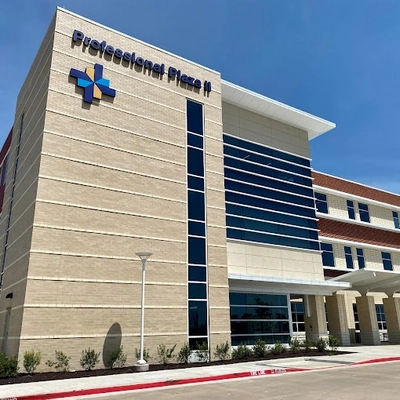
Baylor Scott & White Cardiology Consultants of Texas - Waxahachie
2360 N Interstate 35E Ste 110, Waxahachie, TX, 75165
- Monday: 8:00 am - 5:00 pm
- Tuesday: 8:00 am - 5:00 pm
- Wednesday: 8:00 am - 5:00 pm
- Thursday: 8:00 am - 5:00 pm
- Friday: 8:00 am - 5:00 pm

Baylor Scott & White Cardiothoracic Surgery - Irving
1110 Cottonwood Ln Ste 215, Irving, TX, 75038
- Monday: 8:30 am - 4:30 pm
- Tuesday: 8:30 am - 4:30 pm
- Wednesday: 8:30 am - 4:30 pm
- Thursday: 8:30 am - 4:30 pm
- Friday: 8:30 am - 4:30 pm

Baylor Scott & White Cardiovascular Associates - Fort Worth
1307 8th Ave Ste 406, Fort Worth, TX, 76104
- Monday: 8:00 am - 4:30 pm
- Tuesday: 8:00 am - 4:30 pm
- Wednesday: 8:00 am - 4:30 pm
- Thursday: 8:00 am - 4:30 pm
- Friday: 8:00 am - 4:30 pm

Baylor Scott & White Cardiovascular Consultants - Denton
3333 Colorado Blvd , Denton, TX, 76210
- Monday: 8:30 am - 5:00 pm
- Tuesday: 8:30 am - 5:00 pm
- Wednesday: 8:30 am - 5:00 pm
- Thursday: 8:30 am - 5:00 pm
- Friday: 8:30 am - 5:00 pm

Baylor Scott & White Cardiovascular Consultants - Grapevine
2020 W State Hwy 114 Ste 200, Grapevine, TX, 76051
- Monday: 8:00 am - 5:00 pm
- Tuesday: 8:00 am - 5:00 pm
- Wednesday: 8:00 am - 5:00 pm
- Thursday: 8:00 am - 5:00 pm
- Friday: 8:00 am - 4:00 pm

Baylor Scott & White Cardiovascular Consultants - Highland Village
1401 Shoal Creek Ste 240, Highland Village, TX, 75077
- Monday: 8:30 am - 5:00 pm
- Tuesday: 8:30 am - 5:00 pm
- Wednesday: 8:30 am - 5:00 pm
- Thursday: 8:30 am - 5:00 pm
- Friday: 8:30 am - 5:00 pm

Baylor Scott & White Cardiovascular Consultants - Keller
620 S Main St Ste 240, Keller, TX, 76248
- Monday: 8:00 am - 5:00 pm
- Tuesday: 8:00 am - 5:00 pm
- Wednesday: 8:00 am - 5:00 pm
- Thursday: 8:00 am - 5:00 pm
- Friday: 8:00 am - 4:00 pm

Baylor Scott & White Cardiovascular Consultants - Plano
6000 W Spring Creek Pkwy Ste 220, Plano, TX, 75024
- Monday: 8:30 am - 5:00 pm
- Tuesday: 8:30 am - 5:00 pm
- Wednesday: 8:30 am - 5:00 pm
- Thursday: 8:30 am - 5:00 pm
- Friday: 8:30 am - 5:00 pm

Baylor Scott & White Cardiovascular Consultants - Plano II
4708 Alliance Blvd Pavilion I, Ste 450 , Plano, TX, 75093
- Monday: 8:30 am - 4:45 pm
- Tuesday: 8:30 am - 4:45 pm
- Wednesday: 8:30 am - 4:45 pm
- Thursday: 8:30 am - 4:45 pm
- Friday: 8:30 am - 4:45 pm

Baylor Scott & White Cardiovascular Consultants at The Star
3800 Gaylord Pkwy Ste 910, Frisco, TX, 75034
- Monday: 8:30 am - 5:00 pm
- Tuesday: 8:30 am - 5:00 pm
- Wednesday: 8:30 am - 5:00 pm
- Thursday: 8:30 am - 5:00 pm
- Friday: 8:30 am - 5:00 pm

Baylor Scott & White Cardiovascular Specialists - Mesquite
5308 N Galloway Ave Ste 201, Mesquite, TX, 75150
- Monday: 8:00 am - 5:00 pm
- Tuesday: 8:00 am - 5:00 pm
- Wednesday: 8:00 am - 5:00 pm
- Thursday: 8:00 am - 5:00 pm
- Friday: 8:00 am - 5:00 pm

Baylor Scott & White Cardiovascular Specialists - Rockwall
6705 Heritage Pkwy Ste 202, Rockwall, TX, 75087
- Monday: 8:00 am - 5:00 pm
- Tuesday: 8:00 am - 5:00 pm
- Wednesday: 8:00 am - 5:00 pm
- Thursday: 8:00 am - 5:00 pm
- Friday: 8:00 am - 5:00 pm

Baylor Scott & White Center for Thoracic Surgery - Dallas
3410 Worth St Ste 760, Dallas, TX, 75246
- Monday: 8:00 am - 4:30 pm
- Tuesday: 8:00 am - 4:30 pm
- Wednesday: 8:00 am - 4:30 pm
- Thursday: 8:00 am - 4:30 pm
- Friday: 8:00 am - 4:30 pm
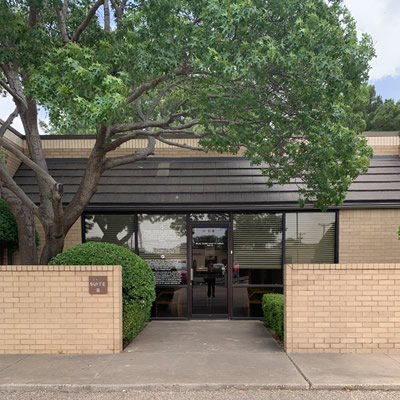
Baylor Scott & White Center for Thoracic Surgery - Lubbock
3711 22nd St Ste B, Lubbock, TX, 79410

Baylor Scott & White Center for Thoracic Surgery - Rockwall
6701 Heritage Pkwy Ste 130, Rockwall, TX, 75087
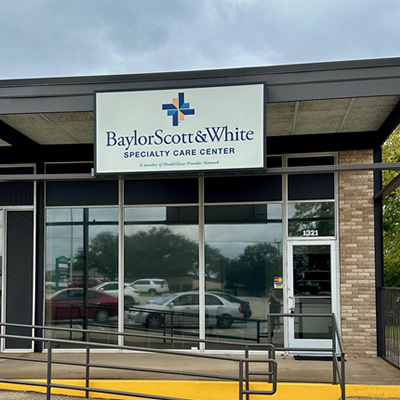
Baylor Scott & White Center for Thoracic Surgery - Tyler
1321 S Beckham Ave , Tyler, TX, 75702

Baylor Scott & White Center for Thoracic Surgery - Waxahachie
2480 N Interstate 35E , Waxahachie, TX, 75165
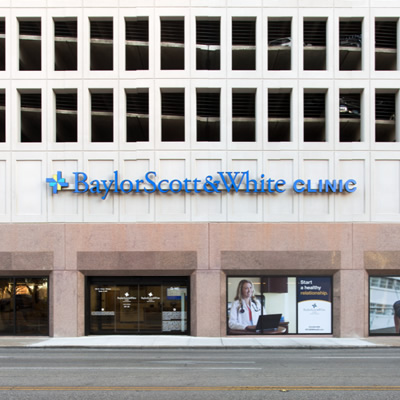
Baylor Scott & White Clinic - Austin Downtown
200 E Cesar Chavez St Ste G140, Austin, TX, 78701
- Monday: 8:00 am - 5:00 pm
- Tuesday: 8:00 am - 5:00 pm
- Wednesday: 8:00 am - 5:00 pm
- Thursday: 8:00 am - 5:00 pm
- Friday: 8:00 am - 5:00 pm

Baylor Scott & White Clinic - Austin North Burnet
2608 Brockton Dr , Austin, TX, 78758
- Monday: 8:00 am - 5:00 pm
- Tuesday: 8:00 am - 5:00 pm
- Wednesday: 8:00 am - 5:00 pm
- Thursday: 8:00 am - 5:00 pm
- Friday: 8:00 am - 5:00 pm

Baylor Scott & White Clinic - Austin Oak Hill
5251 US 290 , Austin, TX, 78735
- Monday: 8:00 am - 5:00 pm
- Tuesday: 8:00 am - 5:00 pm
- Wednesday: 8:00 am - 5:00 pm
- Thursday: 8:00 am - 5:00 pm
- Friday: 8:00 am - 5:00 pm
Frequently asked questions
-
Can coronary artery disease be reversed?
Yes, it is possible to reverse coronary artery disease (CAD). CAD is caused by the buildup of plaque in your arteries. A heart-healthy lifestyle and medicines, especially in the early stages of coronary artery disease, may help stop or reverse plaque buildup, and most importantly, prevent future problems caused by plaque.
-
Can you work with coronary artery disease?
Millions of people with heart conditions are able to live normal, active lives. Whether you can continue working will depend on many factors, including your age, your symptoms, your job and available support.
-
What is the average age for coronary artery disease?
Coronary artery disease is most common among people age 75 and older. Heart disease risk factors may begin as early as your 30s and 40s. Coronary artery disease tends to cause symptoms at a slightly younger age in men compared to women.
-
What does a blocked artery feel like?
You may not be able to feel a blocked artery, but sometimes, coronary artery disease, which occurs when arteries are blocked or narrowed, can cause chest pain.
Some chest pain feels like discomfort that develops when you’re active and goes away with rest. Chest pain may also be sudden and feel like pressure, squeezing, burning or tightness. It may not go away with rest. This type of chest pain is a medical emergency.
-
Is walking good for coronary artery disease?
Yes, walking is good way to reduce risk factors for coronary artery disease. It is one of the easiest ways to get active and requires only a good pair of walking shoes. Brisk walking is considered moderate physical activity. If you have a health condition, talk with your doctor about an exercise routine that is right for you.
-
What foods should you avoid with coronary artery disease?
If you have coronary artery disease, you should avoid foods high in saturated fat, salt, sugar and refined carbohydrates. This includes processed foods, red meat, fried foods, tropical oils such as coconut or palm oil, full-fat dairy, sodas and many fruit juice drinks.

